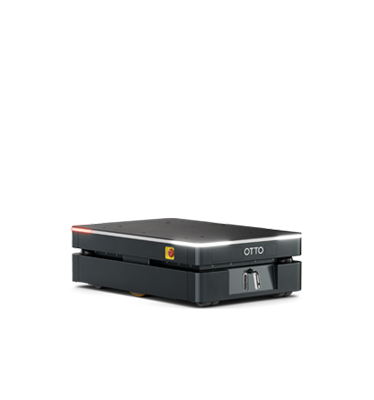Blog
Lights-out manufacturing with mobile manipulation: HIROTEC case study

How do you improve throughput and productivity in an environment that is already operating lean? HIROTEC AMERICA asked the same question after spending three decades focused on the K2 philosophy of working towards continuous improvements (kaizen) and revolutionary changes in technology and process (kaikaku). Taking a deep look at their internal processes, they were able to pinpoint specific tasks within the plant that yielded inefficiencies. By smashing conventional thinking, they were able to use advanced technologies including an autonomous mobile robot and a manipulator to drastically improve production and efficiency, and work toward their goal of lights-out manufacturing.
Automation: The roadmap to lights-out manufacturing
HIROTEC AMERICA provides weld assembly equipment for original equipment manufacturers (OEMs) including GM, Fiat Chrysler Automobiles, Ford, Toyota and BMW. For close to 30 years, the division has been a pivotal part of the global HIROTEC Group with more than $200 million of the $1.6 billion in worldwide sales. Needless to say, the company is one that has adapted over time to changes in the market in order to stay competitive. Looking down the road ahead, HIROTEC AMERICA strives to be a lights-out manufacturer by 2025. This is to say, they plan to use automation virtually everywhere within their facility and place their human workforce in high-value positions that require complex problem solving or attention to detail that cannot be paralleled by machines.
“HIROTEC is always looking for the next technology that is going to take over the industry,” noted Gary Krus, VP of Business Development at HIROTEC AMERICA. “We started by looking for a platform that could make a dual-arm manipulator into a fully mobile manipulation solution. By using the OTTO 1500 with the integrated Yaskawa Motoman manipulator, we have the technology to replicate human labor. OTTO lets us test and prepare future systems to meet our corporate goals of zero operators for spare parts,” added Krus.
Plant automation starts with mobile manipulation

The first process that was automated within HIROTEC Group’s spare parts production was the black oxide process, which involves moving and dipping parts from bucket to bucket in a sequence, with specific time delays between each sequence as parts become oxidized to provide a corrosion resistant surface. Previously, the process was completed manually by whomever happened to be available from the shop floor - there was not a set operator on the line. As such, parts were prone to error and were often required to re-enter the process, significantly impacting productivity and throughput.
Understanding the need to leverage technology in order to stay competitive, and work toward their goal of lights-out manufacturing, HIROTEC AMERICA integrated a Yaskawa Motoman dual-arm manipulator with an OTTO 1500 autonomous mobile robot. The end solution offered controlled, accurate mobile manipulation to pick up and dip parts in black oxide for corrosion protection.
“We can rely on the OTTO solution to do the same thing, exactly the same way, every time. We’re seeing much more consistent parts than what we saw with our manual process. We don’t have to run the parts through multiple times anymore, which has improved our productivity in spare parts production,” said Peter Mourelatos, R&D Project Engineer at HIROTEC AMERICA. “Operators can now remain focused on the valuable tasks in the shop, and not be distracted with secondary jobs like black oxide dipping.”
The automation action plan: Next steps
Automating the black oxide dipping process is just the first step in HIROTEC AMERICA’s lights-out vision. “We’ve successfully implemented mobile manipulation at our site, and I can see the OTTO vehicle being used by HIROTEC operations globally. It’s just the beginning for us as we work towards our goal of lights-out manufacturing with zero operators for spare parts production,” explained Mourelatos.







